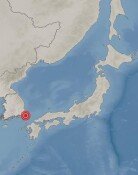China distorts ancient history at Goguryeo museum
China distorts ancient history at Goguryeo museum
Posted April. 26, 2013 06:54,
As China is set to open an exhibition center specializing in displaying relics of Koreas ancient kingdom Goguryeo in Jian, Jilin Province on May 1, it has begun in earnest to publicize key parts of its Northeast Asia Project that claims Goguryeo as its local state.
Dong-A Ilbo reporters and Goguryeo historians have visited the museum, which preliminarily opened to the public early this month, to conduct an in-depth analysis of Chinas distortion of Goguryeo history. The museum opened after 10 years of preparations.
Located in an area bordering North Korea, Jian was the capital of Goguryeo from 3 to 427 A.D. and has approximately 12,000 Goguryeo tombs. The Monument of King Gwanggaeto the Great is also in Jian.
The museum is not so large in size, as it has six exhibition rooms on two floors. One doesn`t need to be an expert in Korean history to notice that the museum did not provide any explanation about Goguryeos link to the Korean Peninsula. Goguryeos relocation of its capital to Pyongyang, a large-scale war between Goguryeo and Chinas Sui Dynasty and the fact that heaps of Goguryeo relics have been excavated in the Korean Peninsula are little mentioned.
By contrast, the museum emphasized that Goguryeo was under absolute influence of and fused politically, economically, socially and culturally with Chinese dynasties in the Central Plain. This thoroughly reflects the core parts of studies conducted under the Northeast Asia Project, although the museum does not directly mention that Goguryeo was a local state of China. A historian who accompanied Dong-A reporters said, Though it is not explicitly stated, the museum claims that Goguryeo history is a part of Chinese history.
The Research Center for Chinese Borderland History and Geography of the Chinese Academy of Social Sciences, a government think tank, carried out from 2002 to 2007 the Northeast Asia Project, including the history of ancient Korean kingdoms such as Goguryeo, Balhae and Gojoseon into Chinese history. Faced with South Koreas protest at the time, the Chinese government claimed that Seoul was reacting too sensitively to some scholars academic discussions, denying that it was a state project.
Just as South Korean scholars have been concerned, the Chinese government is applying Northeast Asian Project research results to the field to solidify the project, starting with the opening of the Goguryeo museum, said Cho Beop-jong, a professor of history at Woosuk University. South Korea should respond proactively.
mungchii@donga.com







